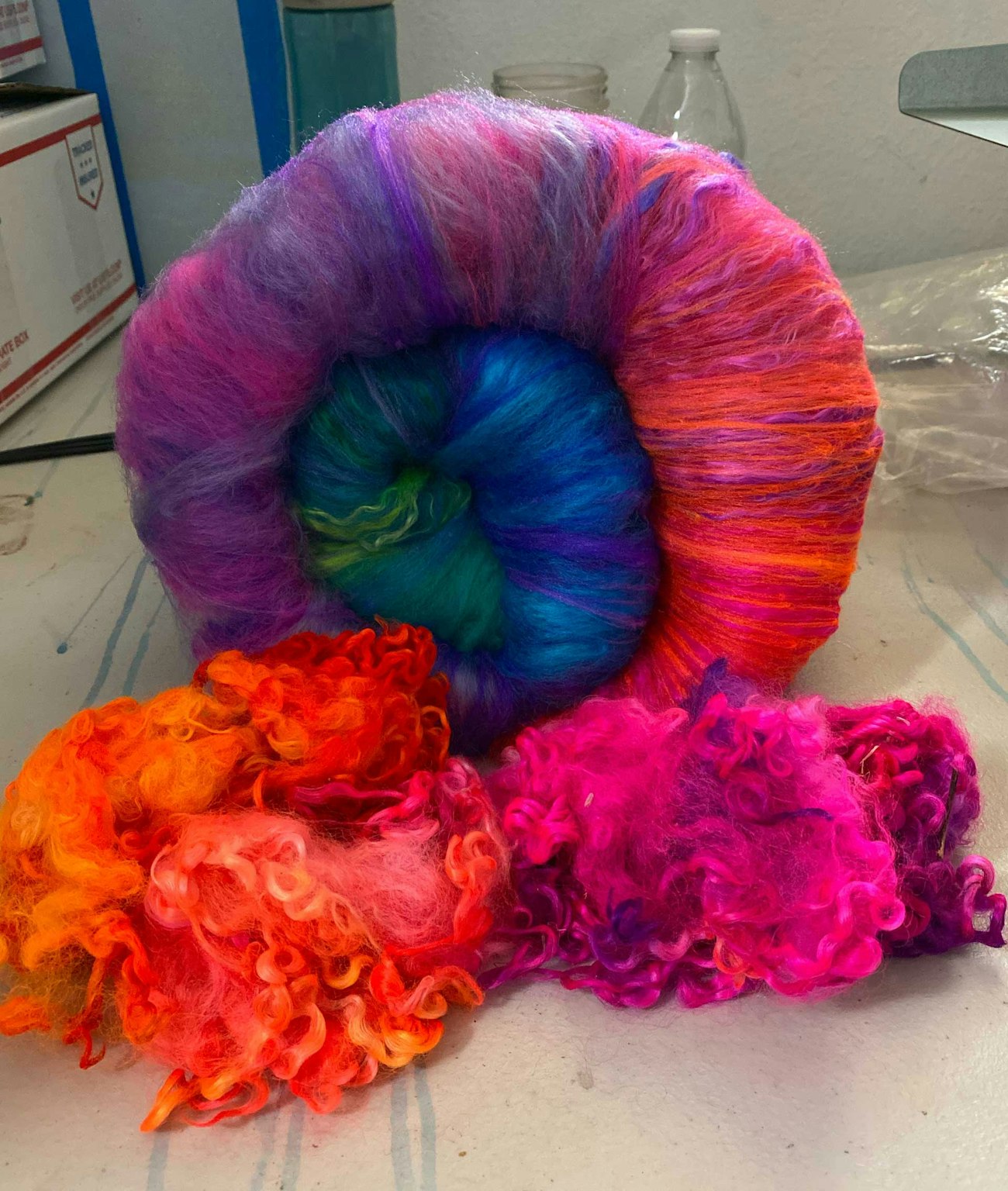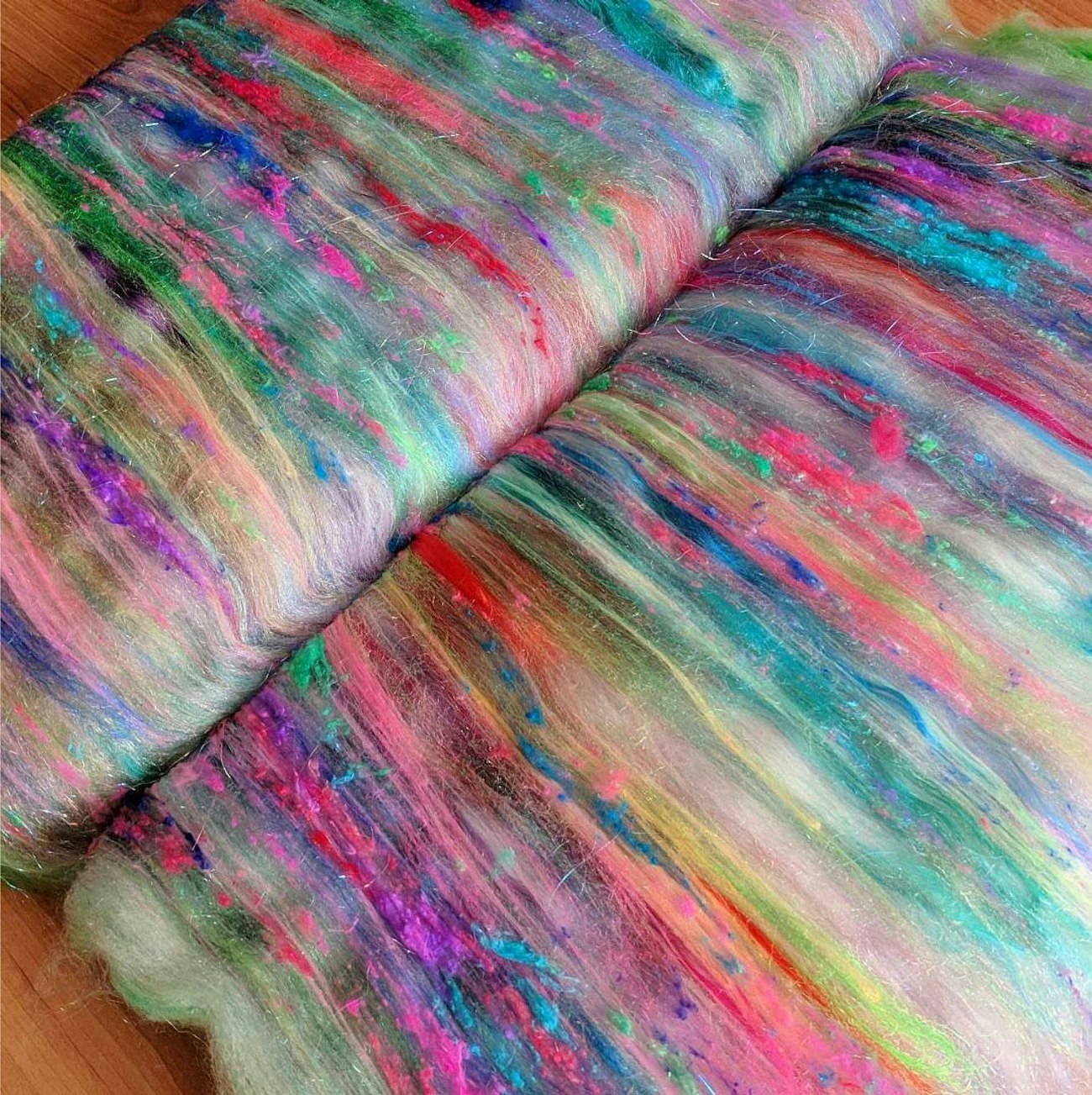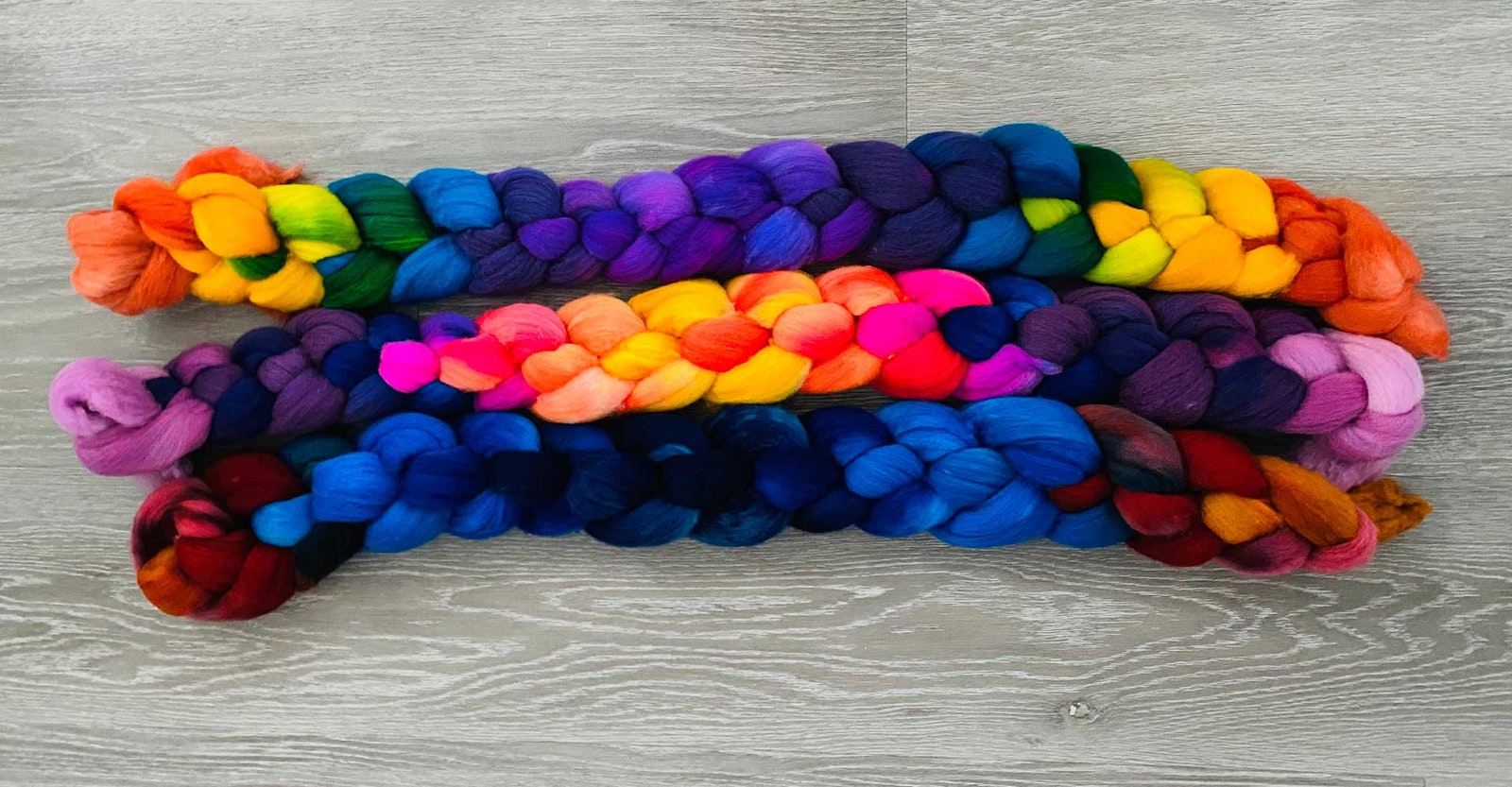Editor’s note: In the Fall 2020 issue, we asked handspinner Stacey Croomes to share a bit about her mentee experience dyeing and carding with fiber artist Nicole Frost, and we asked Nicole to tell us a bit about how she became mentor. Here are Nicole's tips for how to get started mentoring.
Why did you decide to become a handspinning mentor?
When I started out, the people who were amazing weren’t really sharing their secrets. It was a closed, secretive group, which made me feel isolated and lonely in my journey to becoming a dyer and spinner. I spent a pretty penny learning through trial and error; ruined wool, bleeding yarn, and felted fleece were expensive mistakes. These experiences inspired me to create a free “ultimate resource” to take total beginners all the way to becoming self-sufficient creators. Novice dyers and spinners depend on good reference materials, but even more importantly, they need to feel welcomed. I will always be there for the next burgeoning fiber artist who is long on creative drive but short on funds.
I’d love to be a mentor, but I’m no master handspinner. Is that okay?
Absolutely! You don’t need to be a master, just passionate and driven to share. Not everyone is a born teacher, and that’s okay; it’s a learned skill. As long as you have that infectious love for spinning and a deep-seated need to pass this craft on to the next generation, I believe you’ll not only be effective but you’re going to have a lot of fun being the seed of someone’s blossom.

Batts and locks in Nicole’s studio.
Where do I connect with handspinners to mentor?
Check out nearby spinning and weaving guilds, attend knit or spin nights at your local yarn shop, and participate in Ravelry and Facebook forums for your area. Follow Instagram hashtags related to spinning such as #handspunyarn, #handspunstagram, #spinstagram, #spinnersofinstagram, #artbatt, #fiberbatt, and #fiberartist; find people who use those hashtags near you and see if they want to meet up! No knit night at your shop? No local Facebook or Ravelry spinners group? Start one! Patience and persistence are key. And don’t be discouraged if it takes some time. I didn’t start seeing real momentum in my own mentorship journey until I had been working as a full-time fiber artist for about seven years.
What types of spinning techniques should I focus on?
Focus on the techniques you’re most passionate about. I teach only art-yarn spinning because I need a constant stream of ever-changing texture and color exploding off my fingertips to pique my interest and feed that creative bonfire in my brain. Some people love the feel of long draw and natural fleece; others, like me, are instant-gratification spinners who want to have a whole project’s worth of yarn in two hours. Find your groove and your audience will gravitate toward you.
What tools and supplies will I need to start mentoring someone?
If you want to mentor a spinner, you’ll need a wheel or spindle, two if you like teaching people to spin from scratch; if you’d like to teach the full range of carding techniques, you’ll need a drumcarder, handcards, diz and hackle, or a blending board; and to mentor a dyer in advanced techniques, you’ll need dyes and mordants, dye jars, pots/pans, a vegetable steamer (or something similar), and plastic wrap.
And, of course, you’ll need yourself, your passion, your enthusiasm. You are the ultimate tool—the conduit of this precious tradition—and a unique pinpoint of light in the tapestry of the fiber-arts community.

Frost Yarn has a distinct color-explosion aesthetic.
To see Nicole’s free full-length tutorials designed to take you from novice to competent fiber artist, visit www.youtube.com/Nicolefrostyarn. Also check out the Instagram hashtags #frostyarnbatttutorial, #frostyarndyetutorial, and #frostyarnspinningtutorial.
Nicole Frost is a Southern California–based fiber artist who switched addictions from alcohol to wool in 2008. She travels the world teaching dyeing and spinning workshops, and she lives in a wool-stuffed house with her husband, Martin, and two children, Jules and Beatrix. Follow her on Instagram, @frostyarn.

